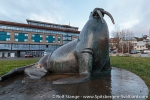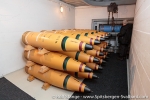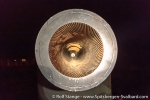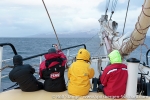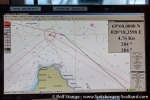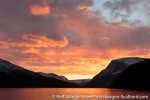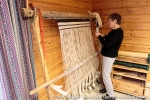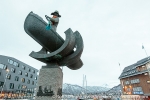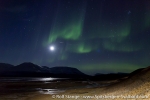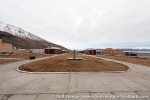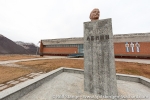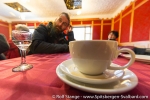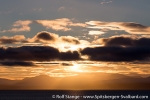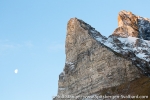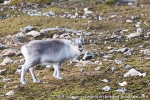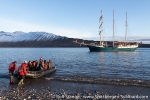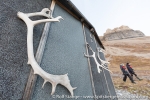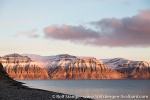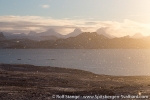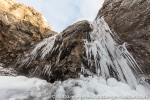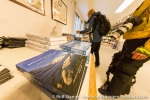-
current
recommendations- Liefdefjord
New page dedicated to one of Spitsbergen's most beautiful fjords. Background information and many photos.
- New Spitsbergen guidebook
The new edition of my Spitsbergen guidebook is out and available now!
- Liefdefjord
New page dedicated to one of Spitsbergen's most beautiful fjords. Background information and many photos.
Page Structure
-
Spitsbergen-News
- Select Month
- April 2025
- March 2025
- February 2025
- January 2025
- December 2024
- November 2024
- October 2024
- September 2024
- August 2024
- July 2024
- June 2024
- May 2024
- April 2024
- March 2024
- February 2024
- January 2024
- December 2023
- November 2023
- October 2023
- September 2023
- August 2023
- July 2023
- June 2023
- May 2023
- April 2023
- March 2023
- February 2023
- January 2023
- December 2022
- November 2022
- October 2022
- September 2022
- August 2022
- July 2022
- June 2022
- May 2022
- April 2022
- March 2022
- February 2022
- January 2022
- December 2021
- November 2021
- October 2021
- September 2021
- August 2021
- July 2021
- June 2021
- May 2021
- April 2021
- March 2021
- February 2021
- January 2021
- December 2020
- November 2020
- October 2020
- September 2020
- August 2020
- July 2020
- June 2020
- May 2020
- April 2020
- March 2020
- February 2020
- January 2020
- December 2019
- November 2019
- October 2019
- September 2019
- August 2019
- July 2019
- June 2019
- May 2019
- April 2019
- March 2019
- February 2019
- January 2019
- December 2018
- November 2018
- October 2018
- September 2018
- August 2018
- July 2018
- June 2018
- May 2018
- April 2018
- March 2018
- February 2018
- January 2018
- December 2017
- November 2017
- October 2017
- September 2017
- August 2017
- July 2017
- June 2017
- May 2017
- April 2017
- March 2017
- February 2017
- January 2017
- December 2016
- November 2016
- October 2016
- September 2016
- August 2016
- July 2016
- June 2016
- May 2016
- April 2016
- March 2016
- February 2016
- January 2016
- December 2015
- November 2015
- October 2015
- September 2015
- August 2015
- July 2015
- June 2015
- May 2015
- April 2015
- March 2015
- February 2015
- January 2015
- December 2014
- November 2014
- October 2014
- September 2014
- August 2014
- July 2014
- June 2014
- May 2014
- April 2014
- March 2014
- February 2014
- January 2014
- December 2013
- November 2013
- October 2013
- September 2013
- August 2013
- July 2013
- June 2013
- May 2013
- April 2013
- March 2013
- February 2013
- January 2013
- December 2012
- November 2012
- October 2012
- September 2012
- August 2012
- July 2012
- June 2012
- May 2012
- April 2012
- March 2012
- February 2012
- January 2012
- December 2011
- November 2011
- October 2011
- September 2011
- August 2011
- May 2011
- April 2011
- March 2011
- February 2011
- January 2011
- December 2010
- November 2010
- September 2010
- August 2010
- July 2010
- June 2010
- May 2010
- April 2010
- March 2010
- February 2010
- November 2009
- October 2009
- August 2009
- July 2009
- June 2009
- May 2009
- April 2009
- March 2009
- February 2009
- January 2009
- December 2008
- November 2008
- October 2008
- August 2008
- July 2008
- June 2008
- May 2008
- April 2008
- March 2008
- February 2008
- April 2000
- Select Month
-
weather information

| Guidebook: Spitsbergen-Svalbard |
Home →
Yearly Archives: 2015 − News & Stories
Harstad and Trondenes – 03rd November 2015
Tue
3 Nov
2015
It turned out that we managed to escape quite well from the storm. Further south, harbours had been closed and ferries were cancelled. In comparison, it was quite allright further north.
Gallery – Harstad and Trondenes – 03rd November 2015
- gallery anchor link: #gallery_812
Click on thumbnail to open an enlarged version of the specific photo.
At least it is dry enough today for a walk through Harstad. The historical-touristic highlights are, however, not in Harstad, but a few kilometres further east in Trondenes. Next to a historical museum and north Norway’s oldest stone church, there is a WWII gun battery which is indeed known by the bizarre name Adolf Gun. It was part of Hitler’s fortification of the Atlantic coast. The Adolf Gun was a mighty thing, with a calibre of 40.6 cm and the capacity to shoot shells that were more than 1000 kg heavy over more than 40 km. And they would even have been able to hit a ship, as the Norwegian military found out later. Luckily, the battery never fired in anger, that is the only positive aspect of this history. But we must not forget the terrible fate of those Russian prisoners-of-war who had to build the fortress. Hundreds of them died during this slavery work.
Lyngenfjord – 02nd November 2015
Mon
2 Nov
2015
Nice light on the surrounding island, at least for some time, while we are waiting for the wind to calm down a bit. As soon as we are sailing again, we are confronted with an unexpected nautical highlight: The crossing of the 70th degree of latitude is not the crossing of 70°N, but of 69°60’N. Really! At least according to the GPS screen on the bridge, at least for a moment. A dime for the GPS’s thoughts that moment!
Another nautical-astronomical challenge are the celestial mechanics behind polar night and day. No problem with the aid of a tropical fruit and a torch. And just in case anyone wants to read again why polar night respectively polar day are not equally long in the northern and southern hemisphere, the arcticle polar night – polar day on this website is recommended.
Gallery – Lyngenfjord – 02. November 2015
- gallery anchor link: #gallery_810
Click on thumbnail to open an enlarged version of the specific photo.
Not much else to say about this day, otherwise. Rain, rain, rain.
Manndalen – 01st November 2015
Sun
1 Nov
2015
Instead of sailing southwest, towards Lofoten, we headed northeast, trying to escape from the weather. Who needs force 9 winds? So off into the fjords, behind the mountains, away from the coast. Deep in Kåfjord, there is Manndalen in the area that was traditionally inhabited by the Sea Sami people. As we learnt in the culture and handicraft centre, there is not much left from the traditional Sami culture due to forced Norwegianisation in the earlier 20th century. Few people speak the Sami language still today, but even young people are interested in learning the language of their grandparents in courses that are offered by the centre. Handicrafts are also enjoying increasing popularity.
A little trail leads along places of Sami opposition against suppression from outside. Incredible what the people here had to endure. Not just that they could not speak their own language in public. Those who could not pay their debts were deprived from their last belongings which were to be auctioned away then. No surprise that at some stage the locals gave the Norwegian lensmann a good beating with fence poles and chased him away. At the end of the war, the German army burnt the place down as the last one in north Norway – as mentioned before, these people had to endure all hardships of a minority in the 20th century.
There is still a small hut. Its owner was supposed to pay dues on the building materials after rebuilding it after the war, as was common. He refused this with a letter which can be summarized briefly, but correctly, with the words „go to hell“. He was left in peace after that.
We were also not saved from some hardships when those who were still with us on the 8 km trail in rain and darkness found that the last part of the small road had given way to a steep, slippery, muddy slope at a road construction site. But the motivation to find a way after more than 6 km is considerable, in contrast to the willingness to turn around and go the same way back.
Gallery – Manndalen – 01st November 2015
- gallery anchor link: #gallery_808
Click on thumbnail to open an enlarged version of the specific photo.
There was not much to see for the rest of the day, just rain and darkness. No chance for the northern lights that everybody came for, which is especially tough as the sun activity is currently said to be considerable. Without coulds, we would probably see northern lights all over the sky!
Oil and gas from the Arctic? Test drillings northeast of Svalbard
During September and October the Norwegian Petroleum Directorate (Oljedirektoratet) arranged seven test drillings northeast of Svalbard. The financing for these drillings was approved by the Norwegian Parliament (Storting).
Such activities are highly contentious, particularly because Norway clearly defined that there should be no drilling for oil or gas beyond the sea ice edge, the line of maximum sea ice expansion in spring. This time the drillings were done along Svalbard´s east side, up to the island Kvitøya and were going down to 200 meters below the seafloor. This area lies outside the protection zone of the archipelago but it lies far north of the sea ice edge. In accordance with this fact, the Petroleum Directorate declared that the drillings had nothing to do with the oil and gas industry. They were just surveys of the geological structure in this area.
The dissenting opposition parties in the parliament, the social liberal Venstre and the green MDG, condemned this operation sharply. If so far in the north, oil and gas extraction is not intended anyway and is not even allowed, at least so far, this operation was simply a waste of money, a speaker of the Venstre said.
In recent years Norway pushed forward the exploration of oil and gas fields in the North Atlantic – off Lofoten and Vesterålen – and in the Barents Sea. But not even there extraction is approved everywhere, and it is still controversial. It is rejected among others by parts of the local population, environmental associations and by the fishing industry. However, when large oil and gas fields are discovered and explored continuously, as recently happened in the Barents Sea northwest of Hammerfest, this will obviously create facts, regardless of the current legal situation. Political decisions will be influenced by the prospect of economical profit. In 2012 the former foreign minister Espen Barth Eide of the social democratic Arbeiderpartiet already made clear that economic considerations are prioritized when it comes to the Norwegian oil and gas resources. Environmental politics can be adjusted, if necessary (see also Spitsbergen-Svalbard.com news Norwegian foreign minister about arctic oil and gas from November 2012).
Northeastern Svalbard: a place for polar bears, ice and wilderness, not for oil and gas.
Source: TV2
Tromsø – 31st October 2015
Sat
31 Oct
2015
The final trip with Antigua is taking us to the northern lights. In theory, anyway. Soon more about real life. Anyway, we are starting in Tromsø, about to sail to the beautiful Lofoten islands. One week of scenic islands, lovely small fishing villages, and of course northern lights, that’s what we are hoping for.

The weather forecast, shown in the first picture, is determining real life, that’s how it is in the far north. You don’t have to be a meteorologist to understand that this forecast predicts shit weather. Yes, I wrote „shit“ weather. Sometimes you have to be direct and honest, there is no way around it.
Gallery Tromsø – 31. Oktober 2015
- gallery anchor link: #gallery_806
Click on thumbnail to open an enlarged version of the specific photo.
Male polar bear injured by scientific collar: continued
This is the update on yesterday’s article (Male polar bear injured by scientific collar). A mixed US-American/Canadian team is out trying to find the bear, which is known as “Andy”. The following update from earlier today (Oct. 28) is from Polar Bears International, with additional comments from Morten Jørgensen:
“… basically … there’s no news: The bear hasn’t been re-sighted since Oct. 13th and a combined US/Canadian team is assessing how to proceed. To further complicate matters, the sea ice has begun to freeze, the bears are dispersing from Kaktovik, and the collar is no longer broadcasting (if it were on the air, it would have been removed earlier). This is a logistically complex problem that they’re doing their best to resolve…”
Comments from Morten:
“This is sad. And it raises more questions than it answers.
The comment that if it had been working, the collar “would have been removed earlier” is a strange one. Does that imply that the fate of “Andy” was known long before the expedition was mounted? Does that mean that the expedition could have been sent out earlier? Does that suggest that the expedition was sent out not so much to save “Andy” as to appease the growing amount of concerned people?
Apart from that, now we know a little (very little) more.
1. We know that the collar is not sending a signal and has not done so for a while – meaning that the bear is wearing it for absolutely nothing.
2. And we know that unless the situation changes, “Andy” is off somewhere in the beginning of the polar night on his own, possibly to slowly die from wounds and infections inflicted by his “instrument”.
This case leaves many, many questions still. Once those responsible are back from their excursion, we expect answers.”
So far Morten’s comments. There will be updates on this pages as soon as there are any news.
The polar bear “Andy” in Alaska, equipped with and injured by a scientific collar with satellite transmitter, is now out on the sea ice. His chances to be found and rescued are getting smaller.
Source: Information from Morten Jørgensen / Facebook-page Protect the Polar Bear
Male polar bear injured by scientific collar
Every year, a large number of polar bears is sedated and marked by scientists in various parts of the Arctic. Samples are taken and some of the bears are equipped with collars that have satellite transmitters to follow their journeys. This is usually only done with female polar bears, as the males have a neck too strong and thick to mount the collars, which would be lost quickly or hurt the bear and even cause difficulties while swallowing food and breathing. It has so far been commonly assumed in public that only female polar bears are marked this way and collars are generally not attached to male polar bears.
As it turned out recently, reality may be different, possibly already for years. Near Kaktivik in Alaska, on the coast of the arctic Beaufort Sea, a male polar bear wearing a collar has been seen and photographed. The collar is cutting into the skin, causing visible injury and most likely pain.
It is believed that the bear has been sedated and marked by scientists in Canada. it is said that male polar bears have been equipped with collars already for some time on an experimental basis. The collars are supposed to drop off automatically after a while, which may be half a year. It is possible that this does not always work in time. It is also possible, actually quite likely, that polar bears can put on a lot of weight in short time when they have access to large amounts of food, for example when a dead whale is stranded on the beach. On the arctic coasts of Canada and Alaska, polar bears sometimes find whale carcasses from indigenous hunting near Inuit settlements. This is unpredictable, according to relevant authorities. These events do indeed not occur on regular intervals, but they are well known and not rare, so they have to be expected and accounted for at any time.
In the USA including Alaska, the United States Fish & Wildlife Services (USFWS) is the authority responsible for managing and protecting marine wildlife including polar bears. According to the USFWS, the polar bear is monitored, but resources are not available to help it. Maybe motivation to take action is limited as the bear received the collar most likely in Canada.
The actual case seems to have been known locally already for months and it is now getting public attention. Interested individuals are approaching the USFWS, adding pressure to help the bear and release it from the collar. More about the present discussion, including contact details of relevant authorities, on the Facebook-page Protect the Polar Bear. Morten Jørgensen from Denmark has taken initiative. Morten is also the author of the book Polar Bears on the edge, where scientific treatment of polar bears is discussed critically.
Scientific sedation, examination and marking of polar bears is generally a traumatic event for the animals concerned, not to mention cases where female bears with cubs are treated this way. See also news posts Polar bear dead after anaesthetisation by scientists (II) and Polar bear found dead in Petuniabukta had been anaesthetised for scientific purposes on this website.
Organizations such as WWF and Polar Bears International are supporting scientific work on polar bears including satellite collars. The discussion about risks of this work is not new, but has not reached the general public yet.
Male polar bear in Alaska, equipped with and injured by a scientific collar with satellite transmitter. Normally, only female polar bears receive such collars.
Source: Information from Morten Jørgensen / Facebook-page Protect the Polar Bear
Polar bear mother with 3 cubs has lost 2 of them
In May 2015, a polar bear family with 3 cubs has been observed in Tempelfjord and Billefjord (click here for May article on this website).
Triplets are very rare, twins are normal. The female in question, did, however, not have triplets for the first time: in april 2011, she had already been caught, sedated and examined by scientists on the east coast of Spitsbergen, when she had triplets. Back then, only one of three cubs survived in the end.
In spring 2015, the female was caught and sedated again. At that time, her 3 cubs were so small that they were not sedated, but they were present during the examination of their mother. According to data from the satellite transmitter on the collar that was attached to the female on the occasion, the family then started a remarkable journey northwards to spend the summer north of Nordaustland. Later, they returned south again, crossing Nordaustland, Hinlopen Strait and northeastern Spitsbergen to return to Tempelfjord, where the female was recently seen. Only one cub was still with her, the other two are apparently lost. It is not known when and how they died, but it is common that mother polar bears lose part of their offspring during the first summer or later. Access to food can be difficult, and competition between the cubs can be strong then.
Polar bear family in Billefjord, April 2015.
Source: Svalbardposten (41/2015)
Election of the new City Council (Lokalstyre) in Longyearbyen
Sunday the 4th and Monday the 5th of October were election days in Longyearbyen. For the upcoming four years the 15 members of the new City Council (Lokalstyre) were elected. The City Council is the supreme organ of the local government in Longyearbyen. 1651 electorates were entitled to vote, having the choice between four parties and their candidates. The counting of votes led to the following preliminary result:
| Party | Result in % | Seats | |
| Arbeiderpartiet | (Ap, social democratic) | 34.6 | 5 |
| Høyre | (H, conservative, economic liberal) | 29.7 | 5 |
| Venstre | (V, social-liberal) | 21.0 | 3 |
| Miljøpartiet De Grønne | (MDG, environmental party, social-liberal) | 13.5 | 2 |
1006 valid votes were cast, according to a voter participation of 60.93 % (2011: 56.56 %). For the calculation of the seats, both the votes for the single candidates and for the parties in total are relevant.
For the Arbeiderpartiet this result is a setback. With 7 seats so far it was the strongest party in the present City Council providing the head of the local government in Longyearbyen, Christin Kristoffersen. Even in the recent survey from September the Arbeiderpartiet was clearly ahead with 56.5 % of the votes and 9 seats. Here the Høyre achieved only 21 % (3 seats), the Venstre 12.9 % (2 seats) and the green MDG 9.7 % (1 seat). However, 45 % of the respondents answered that they still were undecided, would not vote or didn´t want to answer. Kristoffersen had announced earlier that she would not candidate again for another period. This time Arild Olsen is top candidate of the Arbeiderpartiet.
The Høyre had 3 seats in the Council so far and was the 2nd strongest party after the Arbeiderpartiet. Now the Conservatives are seeing an opportunity to define the politics of the upcoming four years in Longyearbyen in a coalition with the Venstre and to install their top canditade Torgeir Prytz as head of the local government. Both parties already announced the intention to go into coalition negotiations. Together they would have a majority of 1 seat in the Council. Such a coalition might sound strange outside of Norway (Høyre means ‚right-wing‘ and Venstre ‚left-wing‘). But in the Norwegian political landscape these two parties are not too far away from each other (see above, Venstre is not a socialist or communist party as the name might suggest).
Venstre and the green MDG were not represented in the City Council before. Especially for the MDG the representation in the Council is a significant success. With 13.5 % of the votes and 2 seats in the Council the group in Longyearbyen would be the most successful group of the environmental party in whole Norway so far. The top candidate of the MDG Helga Bårdsdatter Kristiansen already promised an active opposition policy.
Longyearbyen is now getting a new city council (Lokalstyre). A lot is changing currently in the little city.
Source: Lokalstyre, Svalbardposten
Drastic downscaling of coal mining industry
The low coal prices on the world market make life even more difficult than expected for the Norwegian mining company Store Norske Spitsbergen Kulkompani (SNSK). Already in spring, the Norwegian government, which is owning almost all shares, had to help the SNSK out of trouble with a loan. Due to the dramatic situation, the management has decided to take some drastic steps:
- The production in the mines at Sveagruva (Svea Nord and the new mine in Lunckefjellet) will be stopped. A minimum crew of about 50 miners will ensure maintainance to keep the option of future production available.
- If the coal prices do not recover until 2019, the mines at Sveagruva will be closed.
- The production in the smaller mine 7 near Longyearbyen will be increased. 45 miners (until now 24) are supposed to produce 155,000 tons per year (currently 70,000) .
- Further occurrences near mine 7 will be prepared for mining to ensure a production period of at least 10 years.
- The administration will be downsized.
The maintainance mode in Sveagruva will require an annual budget of 95 million Norwegian Kroner, which will have to come from the owner (the goverment), according to the plans of the management. Negotiations with the government are started immediately.
Altogether, the number of jobs in Longyearbyen and Sveagruva will be decreased by 150. Together with those jobs already lost recently, the number of employees is downsized by 150 within 18 months.
Many people in Longyearbyen are worried now about the future. A lot of jobs in many companies still depend on mining, and the fear is there that a massive downscaling of the coal industry and related economy would have a major negative impact on the local economy and society. The political debate about the future economical structure of Longyearbyen has started. One of the measures to fight the economical problems is the envisaged increase of the harbour facilities.
Facing a dark future: miner in Longyearbyen.
Source: Svalbardposten (36/2015)
Longyearbyen – 04th Oktober 2015
Sun
4 Oct
2015
Harbour days are not the most exciting days. There is a lot to do to finish a trip and to get the ship ready again, even though I won’t be on board when Antigua takes off again.
In the evening, I went back to Jan Mayen in my mind. The Svalbardmuseum had invited me to do a presentation about the island and my travels there. For an hour and ten minutes, we went through the geography and the history of the island, over lava fields and moss carpets, from the impressive coastline to the summit crater of Beerenberg. Nice to go through all that again mentally, it was definitely a highlight amongst my polar travels, and these are not few. And in a place like Longyearbyen, people are certainly interested in their remote neighbour island, 1000 km to the southwest. Nice also that some of the Antigua crew are present in the audience, as well as some well-known faces from Longyearbyen.
Gallery – Longyearbyen – 04th Oktober 2015
- gallery anchor link: #gallery_760
Click on thumbnail to open an enlarged version of the specific photo.
What an irony: the first thing that we saw as we stepped out of the museum was a nice northern light. And this after having hoped for it for a week together with the group that left Antigua and largely flew home today! The happier were those few Antigua-guests who had not yet left. The evening was to be a long one, the northern lights came and went. Between the various chapters of a culinary trip to Italy, enjoying and photographing the aurora was one of the main pleasures of the evening.
By the way, a while ago I wrote an article on this site about the northern lights: General info and photography tips (click here).
Isfjord II – 03rd October 2015
Sat
3 Oct
2015
There were no northern lights last night, but apart from that, it was a very nice evening in Pyramiden, nice and calm.
We spent a nice, long morning there, there is so much to see and to do in Pyramiden, and the photographers can never have enough time.
Nordenskiöldbreen was to be this trip’s final highlight. I could almost get a bit sentimental now. Also because this glacier has shrunk so dramatically since I have seen in for the first time in 1997.
And now we are motoring the last miles back to Longyearbyen, into another colourful sunset. The final miles of this trip, the last miles of a long arctic season. I should calculate how many miles we have done, altogether. Four trips on Antigua, then there was Arctica II, and of course Jan Mayen and East Greenland. In a few hours, when we are alongside, this season’s polar ship-based trips are history, as far as I am concerned (and almost everybody else has already left a good while ago). Of course, there is still the Lofoten trip on Antigua in late October, but that is not the high Arctic. No polar bears, no walrusses, no tundra, no rifles, no Zodiacs (well, maybe occasionally).
Gallery Isfjord II – 03rd October 2015
- gallery anchor link: #gallery_750
Click on thumbnail to open an enlarged version of the specific photo.
No reason to be sad, still. This year’s Spitsbergen time is not over yet, I still have some time here, shore-based. Calm time in Longyearbyen. Nice light, nice people, and hopefully some productive creativity.
Isfjord – 02nd Oktober 2015
Fri
2 Oct
2015
Back in Isfjord, and the lights are going on. A sunset, that is moving more and more towards noon, is throwing a soft pinkish-red light onto the snow-covered mountain tops. The tundra is frozen, the moss beds, soft and wet just a short while ago, are hard as concrete. A few small rivulets are still running under an icy cover, just a few spots of running water are still exposed. Soon, they will also turn into ice, and nothing will move here until well into the next spring.
Only some reindeer are moving here and there, and a group of ptarmigan high up on the slope.
Either there are no whales in Isfjord anymore, or they have already left for the Azores or wherever they spend their winter. Instead, we have time for a short late afternoon landing. Our choice is Skansbukta, a classic. The glowing evening light on Gipshuken, a mountain on the opposite shore, is the undisputed highlight.
Gallery Isfjord – 02nd Oktober 2015
- gallery anchor link: #gallery_748
Click on thumbnail to open an enlarged version of the specific photo.
A cosy evening alongside the pier in Pyramiden. We are wondering if we will get northern light. The sky is largely clear, and the moon is shining on Nordenskiöldbreen. The potential is not bad at all.
Kongsfjord – 01st Oktober 2015
Thu
1 Oct
2015
Last night it looked pretty awful outside. Well, not awful, it was actually quite exciting. Strong winds and dense snow drift. Arctic in winter mode. There was even a snowball fight on deck.
Towards the morning, the weather calmed down and we could easily go ashore on Blomstrand. While we were hiking, the Antigua could even be moved to Ny London, to Mansfield’s old marble mine, to pick us up there. Very nice. And the light, while we were out, you should have seen that! Light snow drift while the sun was going up above the Tre Kroner … gigantic.
Gallery Kongsfjord – 01st Oktober 2015
- gallery anchor link: #gallery_746
Click on thumbnail to open an enlarged version of the specific photo.
The harbour in Ny Ålesund is small, and so is Antigua, so we managed to sneak in to the inner side of the pier, which can be very useful. A calm winter afternoon in Spitsbergen’s northernmost settlement, a calm evening in port, and then we went off, towards Forlandsund, towards Isfjord. There is currently still a bit of swell in outer Kongsfjord, but not so bad anymore, and it will be calm again soon, in Forlandsund.
From Raudfjord to Krossfjord – 29th September 2015
Tue
29 Sep
2015
Finally with Zodiacs into inner Hamiltonbukta, haven’t been there for a while! And things there have changed, meaning the glaciers have retreated considerably. I have to find some old photos to compare. A lot of rocks now where there used to be glaciers 10 years ago.
Hamiltonbukta 29th September 2015 – 1/2

This doesn’t mean that it is not nice anymore. Quite the opposite, the glaciers are still stunningly beautiful. A lot of ice drifting in the bay. And on these small islands, you can still enjoy life in general and the beauty of the scenery. Very nice.
The next low pressure was already on the way. We had decided to make a quick jump down to Kongsfjord, escaping before desaster would strike. A swift cruise through Nordvestøyane and Smeerenburgfjord. Watching the barometer was interesting. In 3 days, it had dropped by 54 hPa. A similar drop on the financial markets would send shockwaves around the globes. But this was only the barometer.
Hamiltonbukta 29th September 2015 – 2/2

There was quite a bit of swell off the coast, swell from hell, that was not so great, and some were not seen for a couple of hours. But at least, finally the northern wind came and up went the sails, making the movement more stable and comfortable. In the late evening, we reached Krossfjord and a reasonably well sheltered anchorage.
News-Listing live generated at 2025/April/02 at 10:39:36 Uhr (GMT+1)
